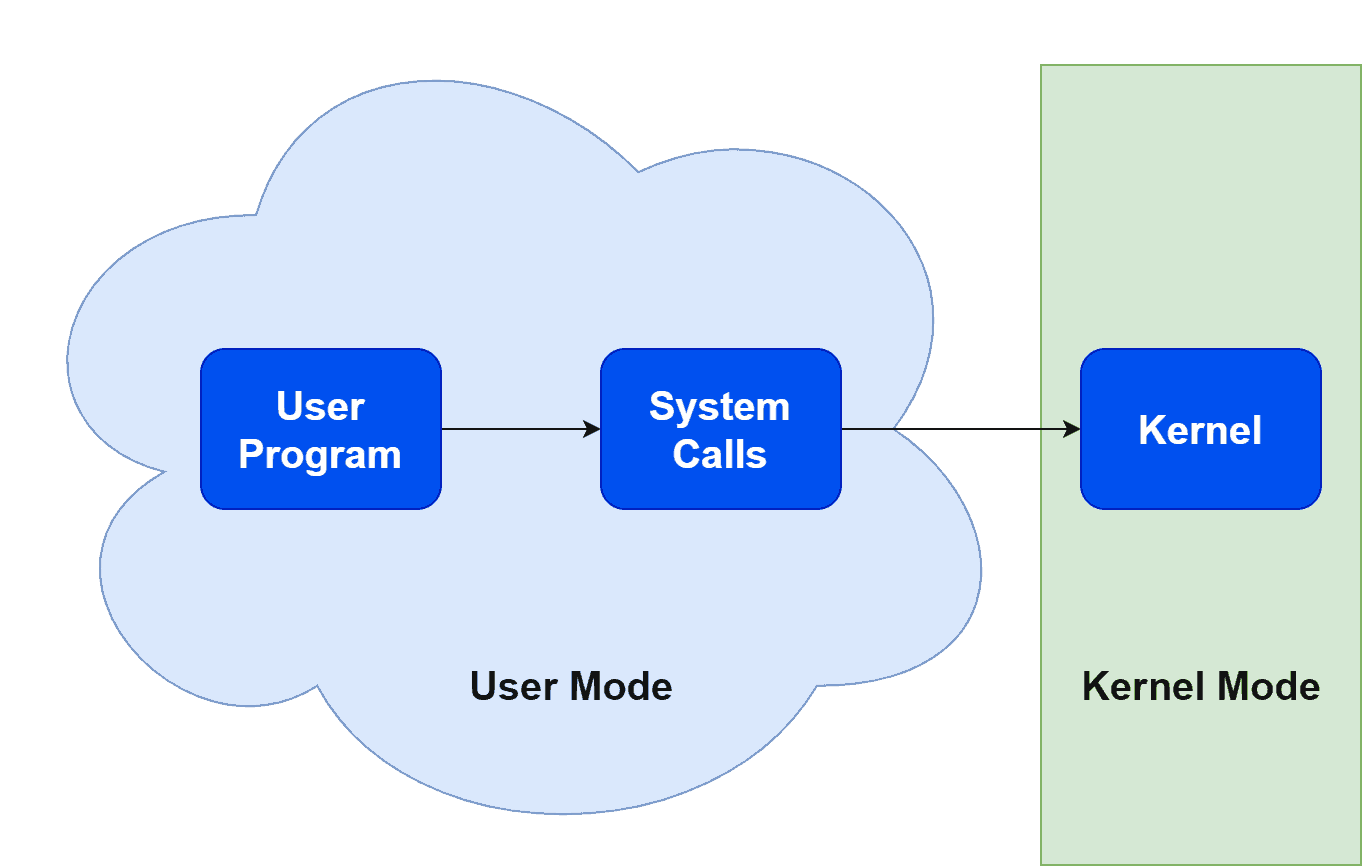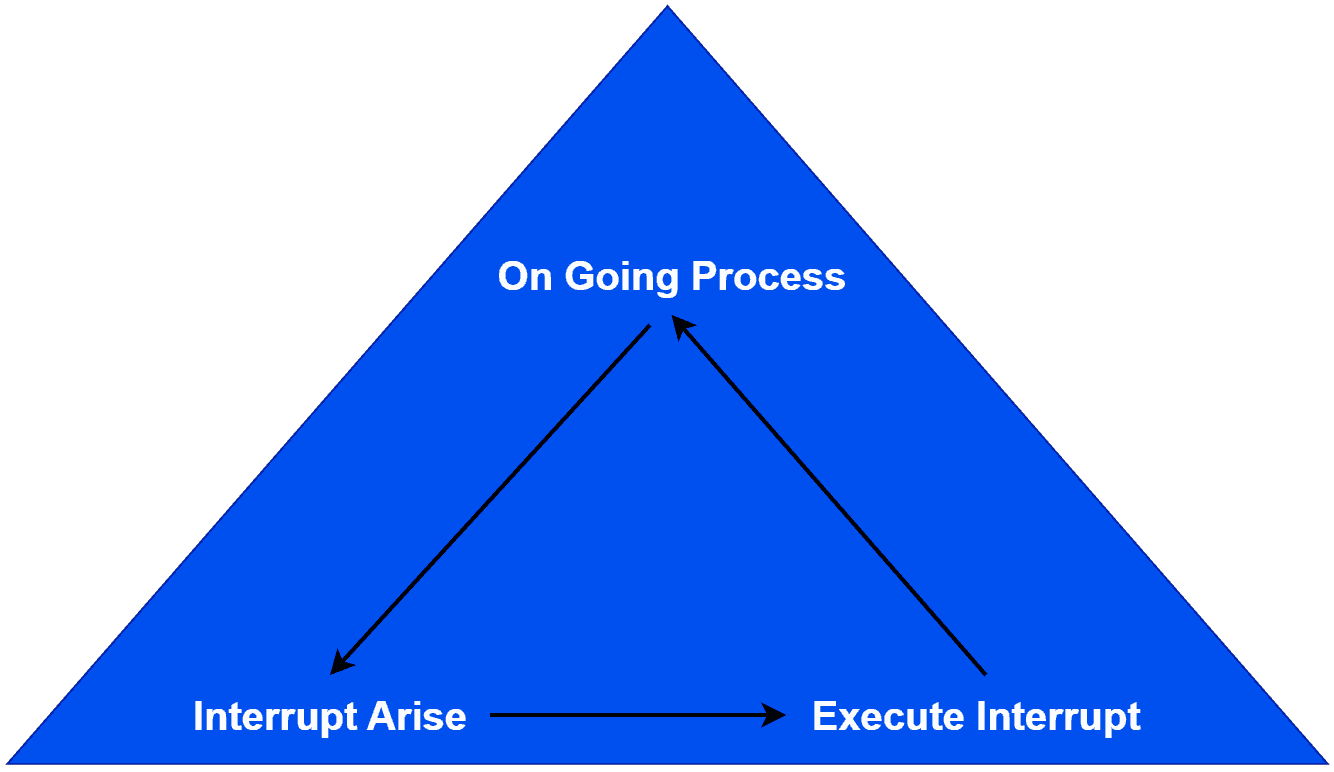Learn through the super-clean Baeldung Pro experience:
>> Membership and Baeldung Pro.
No ads, dark-mode and 6 months free of IntelliJ Idea Ultimate to start with.
Last updated: June 28, 2024
In this tutorial, we’ll discuss system calls and system interrupts in detail.
We’ll also present the core differences between them.
Every operating system provides several ways for users and processes to interact with it. We can divide the interactions between the operating system and users into two categories: system call and system interrupt. Depending on the operating system, it implements either a system call or a system interrupt for communication with processes and users.
Both system calls and system interrupts are ways for user processes to communicate with the OS kernel directly. In computer science, a call is a request by a program to an operating system either for a service or to execute an operation.
An interrupt is an alert triggered by events such as the completion of an instruction, hardware or software signaling for an event, and timers reaching their final countdown value. Additionally, we can initiate interrupts from software to implement concurrency control mechanisms. Furthermore, it can arise in response to some asynchronous event.
Let’s talk about system calls and system interrupts in more detail.
A system call is a method that enables a user process to interact with the kernel of the operating system. A system call is a call from user mode to kernel mode. In other words, it’s the way that a program running on a computer requests a service from the kernel.
We can use system calls to read information from files, get time, manage the computer’s memory, or control the data flow between computers. Furthermore, a user program initiates a system call by executing an instruction that transfers control from the user program to the operating system kernel. A system call is a request by a program to the kernel for the execution of an operation:

Now let’s talk about various system calls that can occur in an operating system. We can divide system calls into five categories based on their use:
A system call in process control manages several operations, such as creating, terminating, and allocating memory to processes. Furthermore, we can use system calls in file management for creating, opening, closing, deleting, and reading files.
Some of the vital services provided by the system calls are networking, protection, main memory management, and process management.
System interrupts are a way for a process to alert the kernel that an event has occurred. Once interrupted, the kernel can process the event and return to the process where it left off. System interrupts are also used to suspend the execution of a program temporarily.
A system interrupt occurs when an operating system might want to stop the program from performing a task in the kernel. Interrupts are common ways for hardware and software signals to alert the computer to events such as the completion of an instruction and the arrival of data from a network:

It can happen that two or more devices simultaneously raise an interrupt. In such a condition, we need additional information from the devices in order to determine the order of the execution of devices. There’re three popular methods that can decide the order of the execution: vector interrupt, interrupt nesting, and pooling.
In the vector interrupt method, the device raising interrupts sends a unique code to the CPU in order to confirm its identity. The interrupt nesting method uses a priority structure in order to determine the order. Finally, in pooling, first, we consider the device with an IRQ bit set for the execution.
Now we know the definitions of system call and system interrupt. A system call is a method that enables a user process to interact with the kernel of the operating system. A system call is a call from user mode to kernel mode. In other words, it’s the way that a program running on a computer requests a service from the kernel.
On the other hand, interrupts don’t require the kernel’s attention. We don’t need to notify the kernel that an interruption has occurred.
Let’s talk about the core differences between system call and system interrupt:
| System Call | System Interrupt |
|---|---|
| A procedural method through which a computer software requests the operating system’s kernel for assistance | An interrupt is an event in which the CPU is asked to do a specific action by outside components in an operating system |
| Enables an application to interact with the kernel in order to access resources, such as memory or hardware devices | Informs the CPU to pause running the currently executing programs in order to perform some urgent actions |
| A system call is initiated by the program calling the kernel by executing a special instruction | A system interrupt is initiated by hardware or software |
| Requires the kernel’s attention | Don’t require the kernel’s attention |
In this tutorial, we discussed system calls and system interrupts in detail. We also presented the core differences between them.